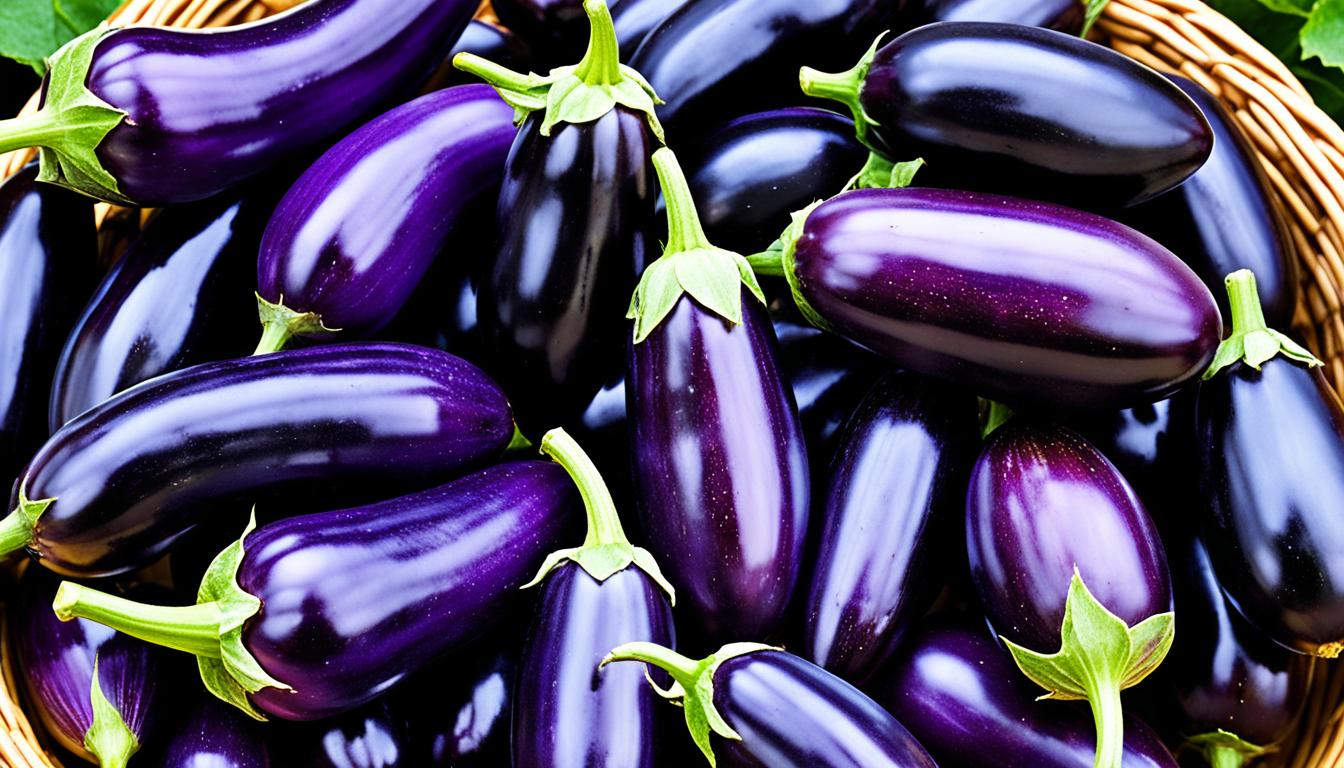As an avid gardener, I’ve learned that knowing when to harvest your eggplants is key. They take about 60 to 90 days to grow once planted in your garden. That’s roughly 90 to 120 days from seed. The best time to pick them is when they’re a bit young. This is when they taste the best and are most tender.
If you wait too long, they can become bitter and not good to eat. To know when your eggplants are ready, look for these three signs of ripeness.
Introduction
If you’ve never grown your own eggplant before, you’re in for a real treat. Homegrown eggplants can be tender, flavorful, and incredibly satisfying to harvest from your own garden. Growing your own eggplants is a rewarding experience that lets you enjoy the delicious fruits at their best.
Eggplants love warm weather and need soil that’s at least 50°F to grow well. The best soil pH for eggplant gardening is between 5.5 and 7.5. It’s important to space your plants right, with 18 inches between each and 30-36 inches between rows. This helps with growth and keeps air moving.
One of the best parts of growing your own eggplants is picking from many different types. You can find everything from classic deep purple to vibrant white or striped ones. This lets you grow your own eggplants and try new flavors and looks.
“There’s nothing quite like the satisfaction of harvesting a fresh, homegrown eggplant and knowing that you’ve nurtured it from seed to plate.”
Whether you’re experienced or new to gardening, growing your own eggplants is rewarding. With the right care and conditions, you can enjoy this versatile and tasty vegetable all season.
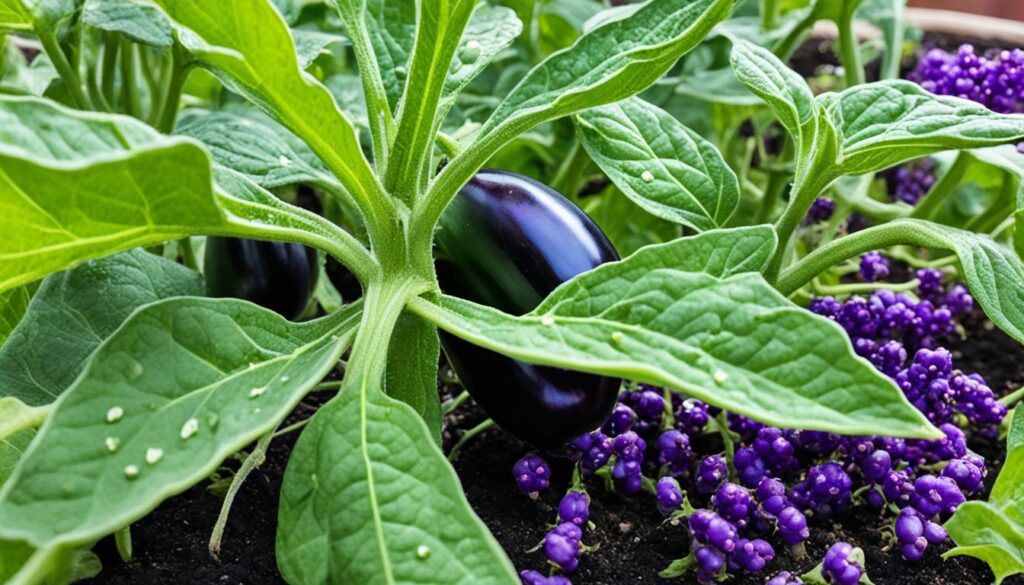
Eggplant Growth Cycle and Harvesting Window
Eggplants are a fascinating and rewarding crop to grow in the garden. Knowing how they grow and when to harvest is key for a great harvest. Let’s look into the eggplant’s life cycle and when to enjoy your hard work.
Understanding the Plant’s Life Cycle
The eggplant growth cycle takes 65 to 100 days from seed to fruit. It starts with seed germination, which happens in 5 to 10 days under good conditions. Then, the first leaves, called cotyledons, appear, followed by the true leaves 7 to 14 days later.
This growth leads to the plant’s flowering and fruiting.
The Importance of Timely Harvesting
Harvesting eggplants at the right time is crucial for their quality and taste. They should be picked when still a bit immature for the best flavor. If you wait too long, they can become bitter.
Check the size, color, and firmness of your eggplants to know when to pick them. Eggplants are ready to harvest between 65-100 days after sowing. They should be firm but slightly yield when pressed, with a glossy skin and creamy flesh inside.
By understanding the eggplant growth cycle and the importance of timely harvesting, you’ll enjoy a bountiful and delicious eggplant harvest.

“Timing the harvest just right is crucial, as eggplants are best picked when still a little immature for the best flavor and texture.”
How Do You Know When Eggplant Is Ready To Pick?
Knowing when to pick your eggplants is key for the best taste and texture. Look for these signs to know when they’re ready.
Sign #1: Size and Color
Eggplants should be 6-8 inches long and have a deep, glossy purple color. Don’t pick fruits that are too big or look brown, as they’re likely overripe.
Sign #2: Firmness and Glossiness
The eggplant should feel firm and have shiny skin. Avoid fruits that are soft, wrinkled, or dull. These are not yet ready.
Sign #3: Stem Detachment
When the eggplant is ready, pulling the stem should be easy. If it’s hard to remove the stem, the fruit is not mature yet.
Watch for these signs – size, firmness, and stem detachment. This way, you’ll pick your eggplants at the best time, ensuring great flavor and texture.

Additional Tips for Eggplant Harvesting
Harvesting eggplants is more than just looking for ripeness signs. To get a great harvest, follow these tips:
- Check your eggplant plants often. They can quickly turn overripe and lose quality. Keeping up with harvesting is key.
- Use a sharp, clean knife or pruners to cut the stem. Leave 1-2 inches attached to the eggplant. This keeps the skin safe.
- Be gentle when picking eggplants to avoid bruises or scratches. Twist the fruit off the plant carefully.
- Harvest in the cooler parts of the day, like early morning or evening. This keeps the eggplants from getting too hot.
Following these tips will make your eggplant harvest top-notch and tasty. By doing so, you’ll get the most out of your eggplant plants.
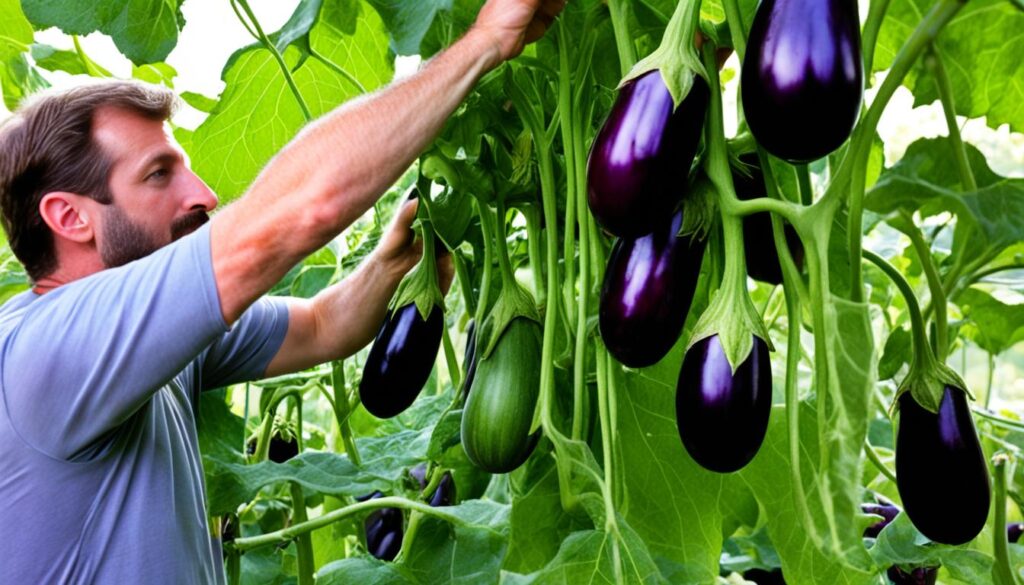
“Eggplants should be harvested slightly immature to avoid tough, bitter flesh and browning skin.”
| Tip | Explanation |
|---|---|
| Check plants frequently | Eggplants can quickly become overripe, so regular monitoring is crucial. |
| Use a sharp knife or pruners | Cutting the stem with a clean, sharp tool helps prevent damage to the fruit. |
| Handle eggplants gently | Avoiding bruises and scratches on the delicate skin preserves the eggplant’s quality. |
| Harvest in cooler times | Picking eggplants during the morning or evening prevents heat exposure. |
Eggplant Ripeness Signs: A Recap
Determining when to pick your eggplants is key. Look for certain visual signs to know they’re ready. These signs include size, color, firmness, and stem detachment.
Start by checking for eggplants that are 6-8 inches long. They should have a deep, glossy purple hue. Stay away from fruits that look dull or pale. They’re probably not ripe yet. The eggplants should also feel firm to the touch, not soft or spongy.
- Size and color: Eggplants should be 6-8 inches long with a deep, glossy purple shade.
- Firmness and glossiness: The fruit should be firm and have a shiny, unblemished skin.
- Stem detachment: The stem should detach easily from the plant with a gentle tug.
When you pull on the eggplant’s stem, it should detach easily from the plant. If it doesn’t come off easily, it’s not ready yet.
By paying attention to these eggplant ripeness indicators, you’ll know when to pick them. This ensures you get the best flavor and texture. With practice, you’ll easily spot the signs of eggplant maturity.
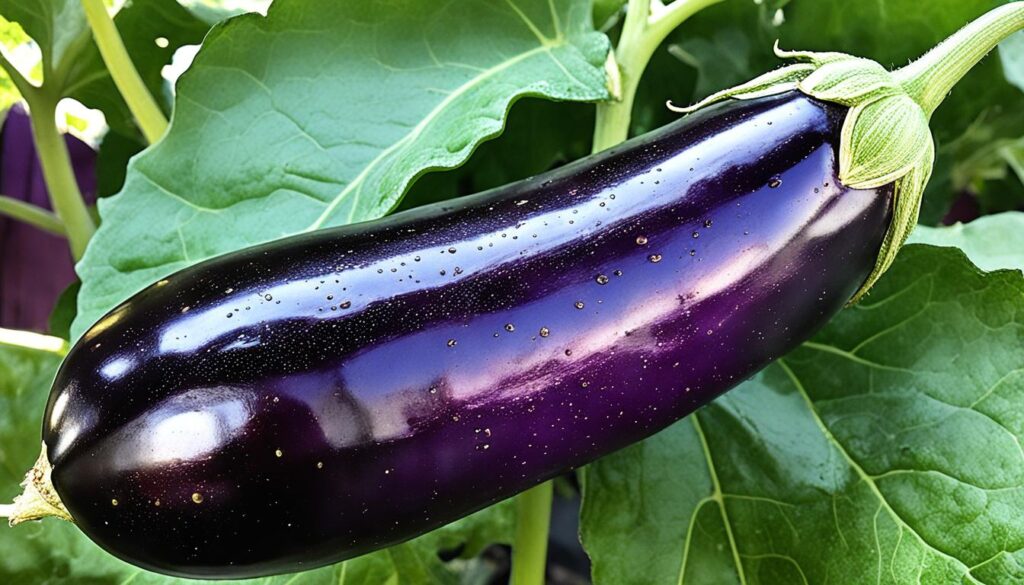
Growing eggplants is rewarding and fun. With the right knowledge, you’ll get a great harvest. If you have more questions, talk to local gardening experts or online resources.
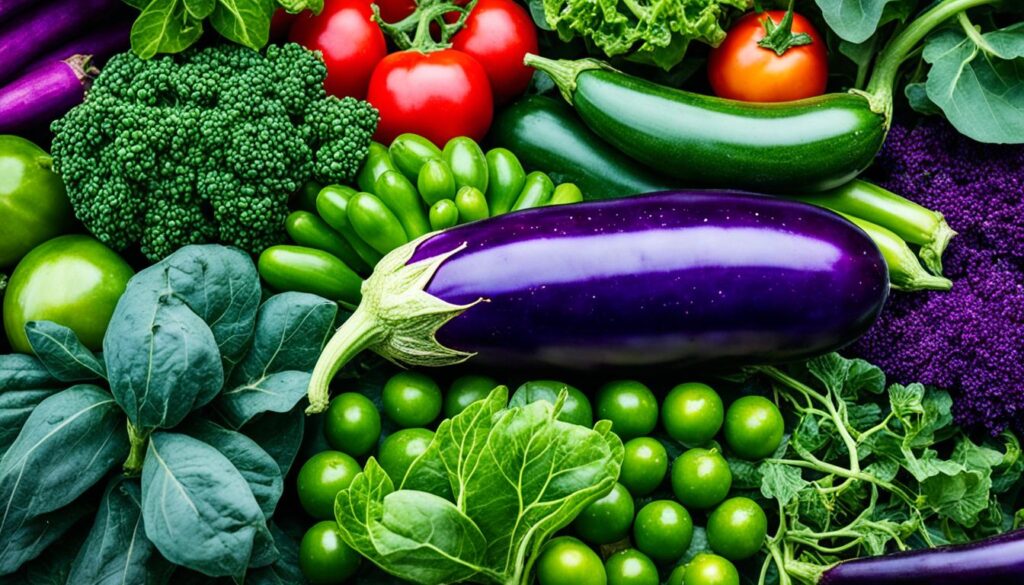
Conclusion
Knowing when to harvest your eggplants is key to enjoying them fully. Look for signs like size, color, firmness, and glossiness. Also, check if the stem comes off easily. This way, you’ll pick your eggplants at the best time. With practice, you’ll get the timing right for the tastiest fruits. Happy gardening!
Growing eggplants comes in many colors and shapes. Knowing when to pick them opens up new flavors in the kitchen. You can make everything from grilled eggplant steaks to creamy baba ghanoush. Keep an eye on your eggplant plants for the best results.
With these tips, you’re on your way to being an eggplant expert. Happy gardening, and enjoy your delicious harvest!
FAQ
How long does it take for eggplants to produce?
Eggplants take about 60 to 90 days to produce after being moved to your garden. This is roughly 90 to 120 days from when they were started from seed.
When is the best time to harvest eggplants?
Harvest eggplants when they’re a bit young. They taste best and are most tender at this stage. Waiting too long can make them bitter and unusable.
What are the key signs to look for when eggplants are ready to pick?
Look for three signs to know when eggplants are ready: 1) Size and Color – They should be 6-8 inches long and have a deep purple color. 2) Firmness and Glossiness – They should feel firm and have shiny skin. 3) Stem Detachment – The stem should come off easily when pulled.
Are there any other tips for harvesting eggplants?
Yes, here are more tips for harvesting eggplants: 1) Check your plants often to catch them before they get too ripe. 2) Use a sharp knife or pruners to cut the stem, leaving a bit attached to the fruit. 3) Be gentle when handling eggplants to avoid bruising their skin. 4) Harvest in the cooler parts of the day to keep them from getting damaged by heat.
